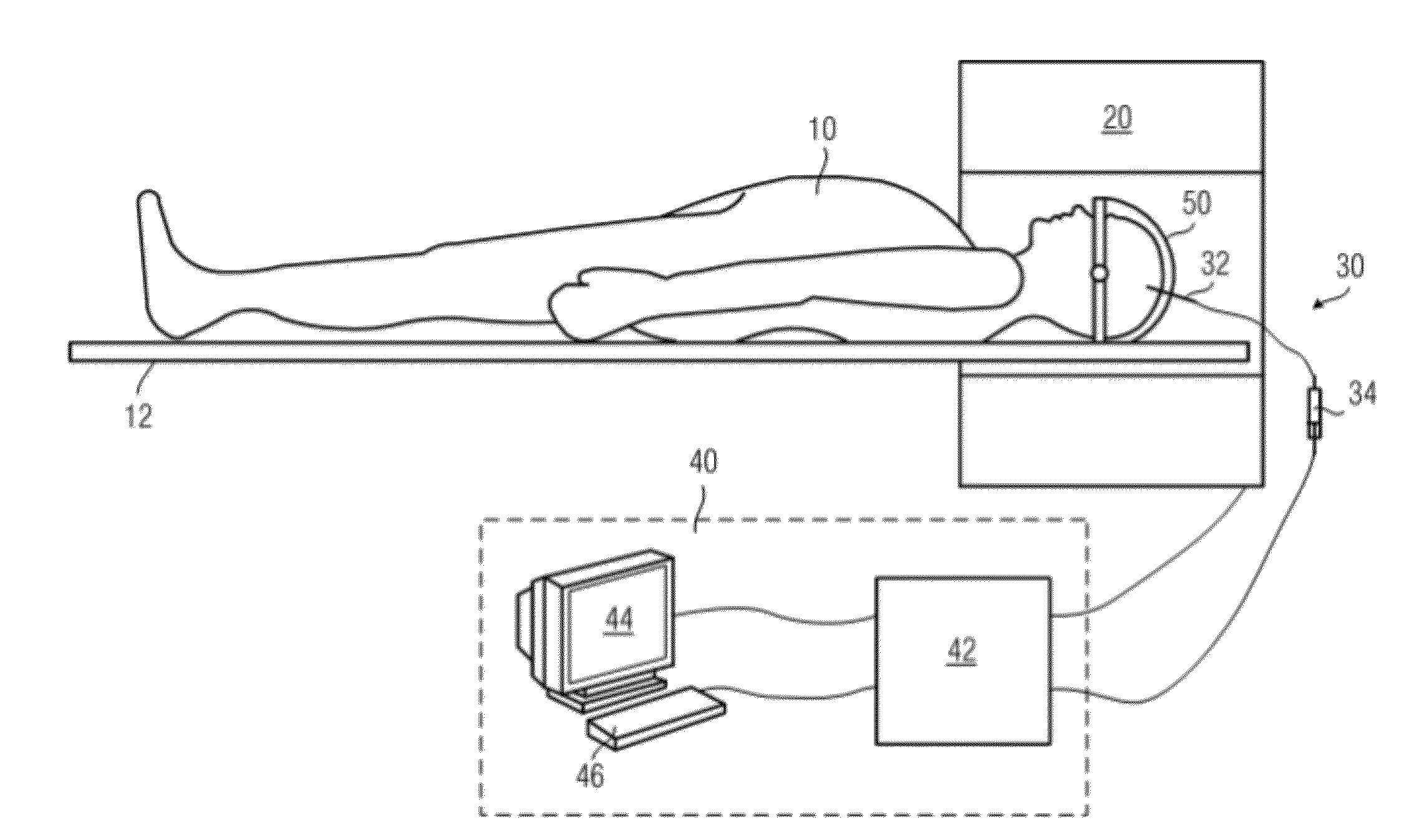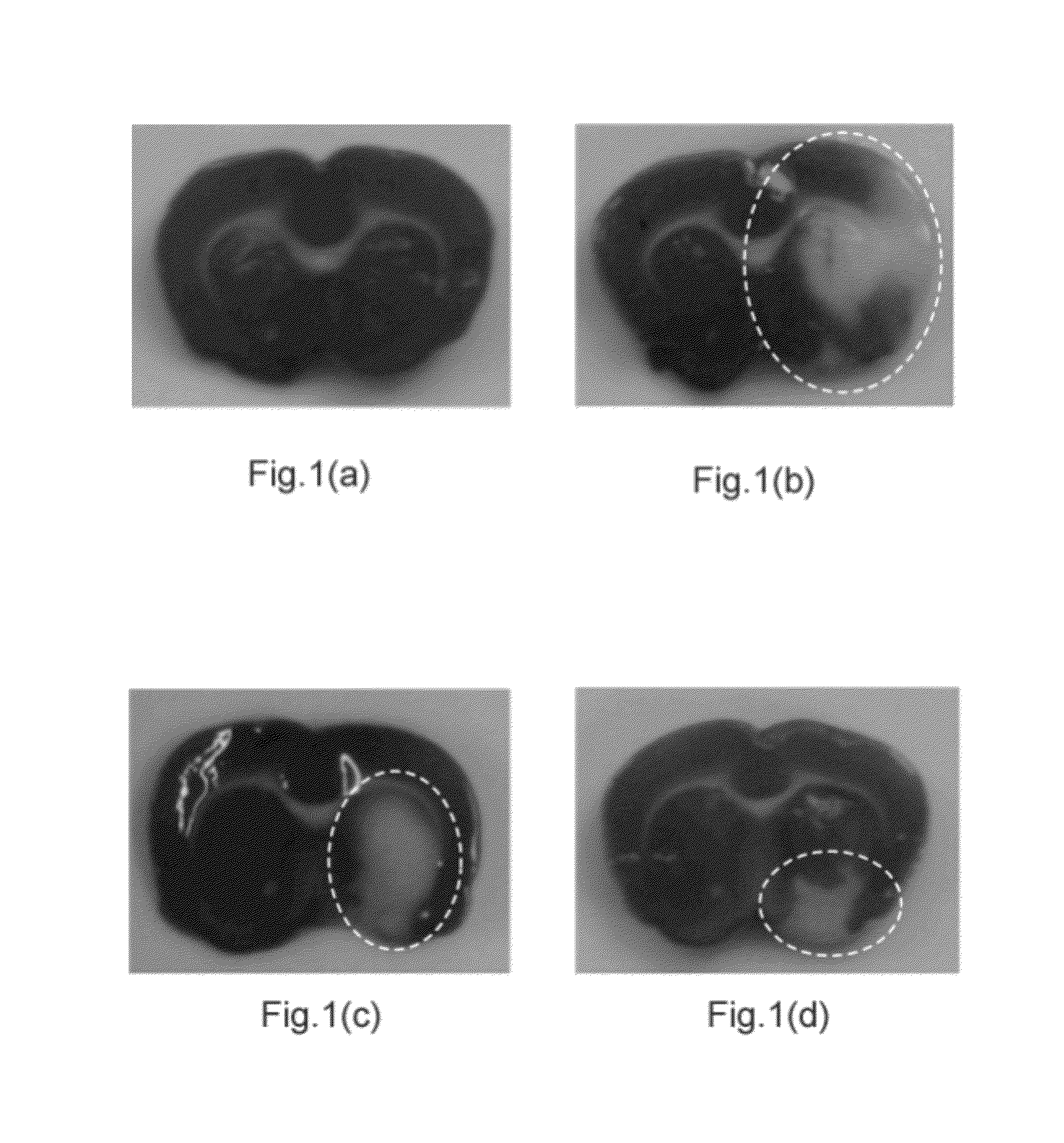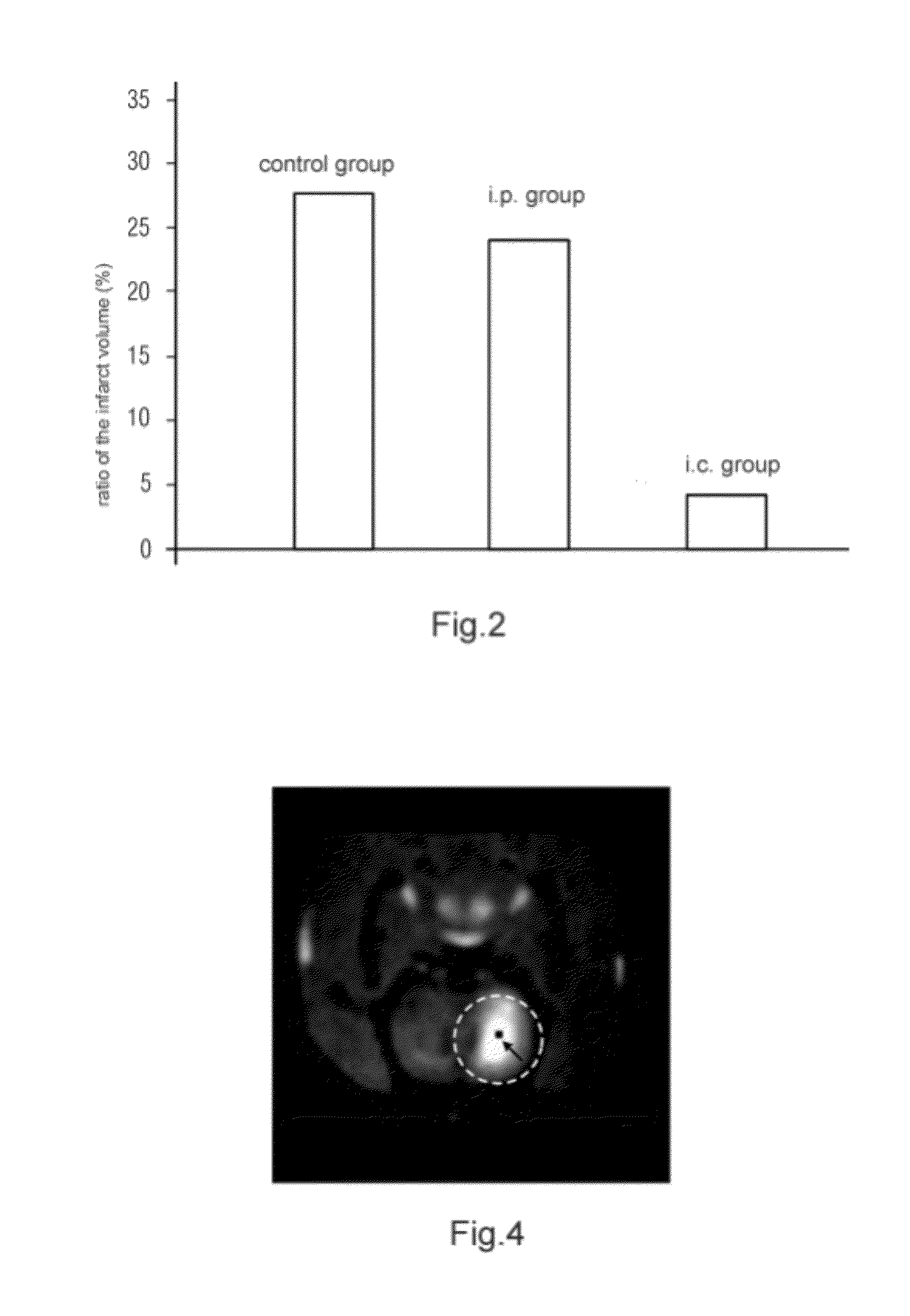Drug Delivery Method Via Brain Extracellular Space and a Device Thereof
- Summary
- Abstract
- Description
- Claims
- Application Information
AI Technical Summary
Benefits of technology
Problems solved by technology
Method used
Image
Examples
Embodiment Construction
[0042]The preferred embodiments of the present invention are described below with reference to the accompanying drawings.
[0043]FIG. 1(a) to FIG. 1(d) show the brain slices undergoing TTC staining of rats brain after administering drugs in different way. In the experiment, rats are divided into four groups:
[0044]the first experimental group is a sham group and includes six rats;
[0045]the second experimental group is a control group and includes seven rats administered with saline;
[0046]the third experimental group is an i.p. group and includes six rats administered of citicoline with a dose of 2 g / kg by abdominal injection;
[0047]the fourth experimental group is an i.c. group and includes seven rats administered with citicoline with doses of 0.0025 g / kg via ECS at the speed of 0.30 μL / min. The volume of citicoline is 5 μL and the puncture needle retain for 5 min after delivery.
[0048]Two hours after delivery, a permanent focal cerebral ischemia model is made by thread embolism method, ...
PUM
 Login to View More
Login to View More Abstract
Description
Claims
Application Information
 Login to View More
Login to View More - R&D
- Intellectual Property
- Life Sciences
- Materials
- Tech Scout
- Unparalleled Data Quality
- Higher Quality Content
- 60% Fewer Hallucinations
Browse by: Latest US Patents, China's latest patents, Technical Efficacy Thesaurus, Application Domain, Technology Topic, Popular Technical Reports.
© 2025 PatSnap. All rights reserved.Legal|Privacy policy|Modern Slavery Act Transparency Statement|Sitemap|About US| Contact US: help@patsnap.com



